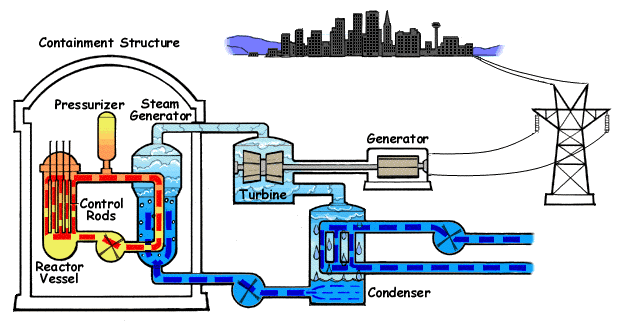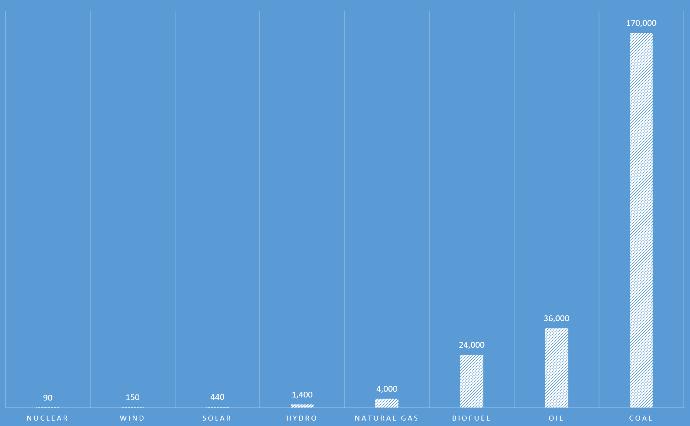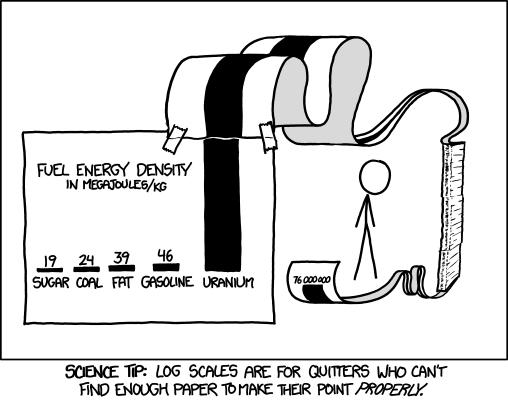It would make sense to start off with what ‘nuclear’ energy really means and entails.
The term ‘nuclear’ often has a negative connotation associated with it, particularly due to the evident destructive nature of nuclear bombs along with isolated nuclear power plant meltdowns like Chernobyl and Fukushima events.
The meaning of the word is derived from the term ‘nucleus’, which is the centre of the atom containing protons and neutrons. Nuclear energy simply involves the reconfiguration of these subatomic particles.
Whereas in a typical chemical reaction, electrons are transferred and shared; in a nuclear reaction, the entire atom is changed, and a different element is formed. This produces a huge amounts of energy in the form of radiation. There are two kinds of nuclear reactions – Nuclear fission and Nuclear fusion.
You might have heard the term “splitting the atom”, particularly referring to nuclear bombs, well, splitting the atom is what the process of nuclear fission does. A high energy proton is bombarded against the nucleus of a heavy element (such as uranium-235), the atom disintegrates and forms two lighter elements (such as krypton and barium) along with an immense amount of energy, and it also further releases more protons, which continue to bombard other Uranium elements in the proximity and form a chain reaction. This is the process of nuclear fission both in nuclear bombs and in nuclear power plants. The only difference is that the reaction in nuclear power plants is a controlled reaction. 
Nuclear fusion is a less widely known process due to the fact that the conditions to minimize energy input against energy output demand temperatures often times far beyond anything we can feasibly attain. The sun does not undergo combustion reaction (the chemical reaction you’d observe in igniting flammable substances on fire), rather, it undergoes a reaction known as nuclear fusion. In nuclear fusion, isotopes of light elements (such as tritium and deuterium of hydrogen) bind together under high energies to form a slightly heavier element (like helium). This reaction yields a huge amount of energy in the form of radiation.

Nuclear energy is quite complex and expensive. Initially, in the 1960s or so, private companies thought nuclear energy was much too risky as an investment. They chose to stick with coal, gas and oil instead.
In 1970, war in the Middle East caused oil prices to skyrocket. Many explored a form of nuclear power using the Light Water Reactor. It was not very expensive. It heats up water using an artificial chain reaction. Water is supplied to the reactor vessel. The core of the reactor vessel is where nuclear fission takes place, it heats up the water into steam which drives the turbines, it then powers up the generator to produce electrical energy. The principle is shockingly simple, it is also extremely cheap. These are the reasons it was preferred over other reactors. Approximately 80% of functional nuclear reactors today are a form of the Light Water Reactor. 
That said, let’s address some of the pros and cons of nuclear energy.
Cons:
The risk of accidents is always possible, and a nuclear meltdown can force the surrounding region to be inhabitable for a long period of time, this would cause displace in lives of perhaps thousands of people. Also, with retrospect from the Chernobyl event, a radioactive cloud could possibly form and threaten a further proximity than the initial meltdown would.
Nuclear energy can often times be exploited for more malicious reasons. Such as weaponizing them and creating a stockpile mainly to act as a nuclear deterrent.
Nuclear waste is a huge issue. Sometimes after absorbing a neutron, the nucleus of a Uranium atom does not fission, but however, transforms into a heavier isotope of Uranium. Simply put, this compromises the stability of the atom and causes them to be extremely radioactive (the process of undergoing radioactive decay and releasing various forms of radiation). However, recycling much of these waste is feasibly possible, unfortunately it is not compatible with the majority of reactors today. 
Pros:
A study by NASA scientists concluding that nuclear energy saved nearly 2 million lives that would have been lost to fossil fuels and it may save millions more. Risk perception is skewed. An infrequent event like a meltdown tricks people into fallaciously thinking that nuclear energy is more dangerous than coal/oil, when it isn’t necessarily the case. Similarly, infrequent airplane crashes tricks people into thinking that airplanes are less safe than cars, which is also not true at all.
Nuclear energy actually ranks last compared to all other forms of energy in death/kWh. Further, 4.6 people die a day due to air pollution.
Nuclear energy is much less harmful to the environment compared to coal/oil/gas. It produces a negligible amount of CO2 compared to the other three. Climate change is a current issue that needs to be dealt with, as indicated upon discovering that a third of central, northern Great Barrier Reef corals are dead; and the drought in Syria that arguably played a significant role in escalating tensions into what we know today as the ‘Syrian civil war”.
Power plants which experienced meltdowns are using extremely old technology. Nuclear technology has not progress much in the last 40 years or so. A reactor known as the Liquid Fluoride Thorium reactor reduces many problems associated with nuclear energy. Thorium is exceedingly hard to be turned into nuclear weapons, and it is very abundant. Its energy output per tonne is equivalent to 200 tonnes of Uranium or 3 million tonnes of coal. Thorium is alpha and I would totally date him! (bee tee dubs, nuclear energy in general produces far more energy than other sources).

The result of nuclear power plant meltdowns has less to do with the inherent nature of nuclear power itself, and more to do with the failure to include safety mechanisms and management of said facilities, along with old technology. During the Chernobyl event for instance, the nuclear power plant itself was exceedingly old soviet-era technology that should have been shut down. Combined with a poor design, untrained workers and a culture that rewards success over safety; the event was nearly inevitable.
Conclusion: We've seen the evidence that links any shortcomings in nuclear power is tied to a lack of technology and a lack of safety protocols. Perhaps with further innovation and scientific research about this technology could be beneficial in the future. We've just scratched the service of nuclear technology.
Fear mongering predicated largely on ignorance is not helpful to society one bit, in fact, it often times can be downright detrimental. Perhaps nuclear power may solve lots of our energy problems and we should work today's a nuclear future, in the off chance that it doesn't, we can say with certainty that we know it to be true, instead of basing our sentiments on pure speculation without trying. Humans aren't idiots, well some are, like Tumblr, but we have a knack of surpassing expectations that we didn't even know was there in the first place.
Go home anti-nuclear proponents, you're drunk! It's damned passed your bedtime!
 Holidays
Holidays  Girl's Behavior
Girl's Behavior  Guy's Behavior
Guy's Behavior  Flirting
Flirting  Dating
Dating  Relationships
Relationships  Fashion & Beauty
Fashion & Beauty  Health & Fitness
Health & Fitness  Marriage & Weddings
Marriage & Weddings  Shopping & Gifts
Shopping & Gifts  Technology & Internet
Technology & Internet  Break Up & Divorce
Break Up & Divorce  Education & Career
Education & Career  Entertainment & Arts
Entertainment & Arts  Family & Friends
Family & Friends  Food & Beverage
Food & Beverage  Hobbies & Leisure
Hobbies & Leisure  Other
Other  Religion & Spirituality
Religion & Spirituality  Society & Politics
Society & Politics  Sports
Sports  Travel
Travel  Trending & News
Trending & News
Most Helpful Opinions